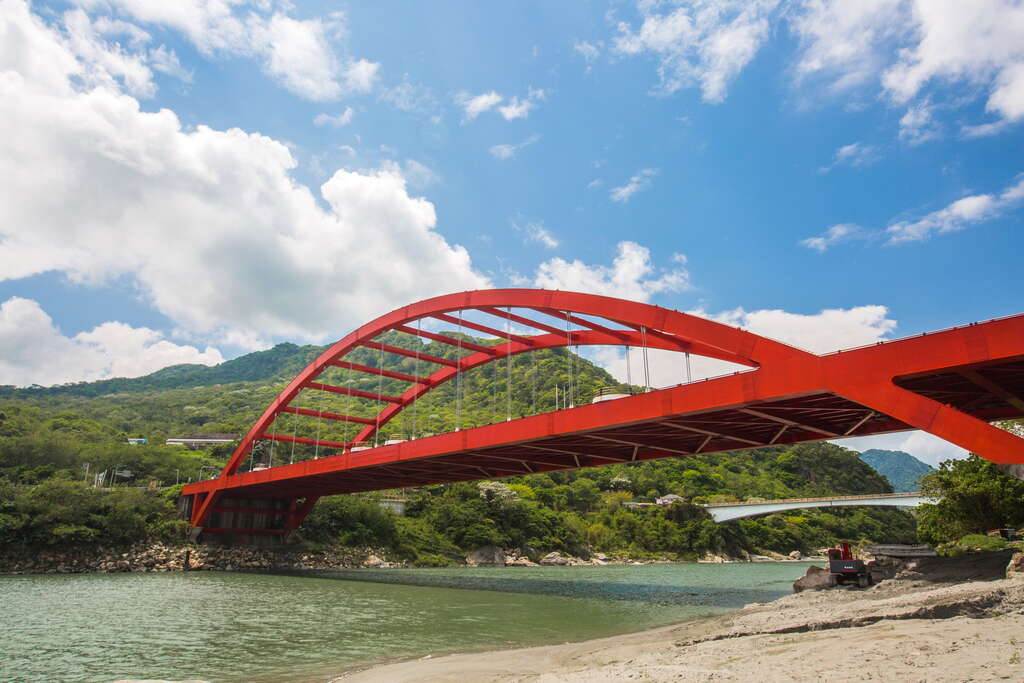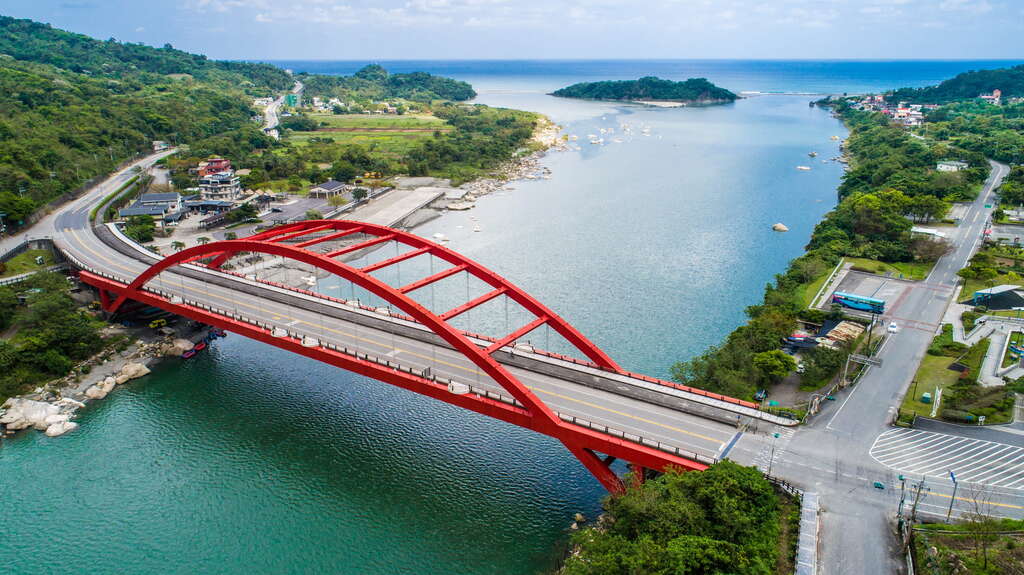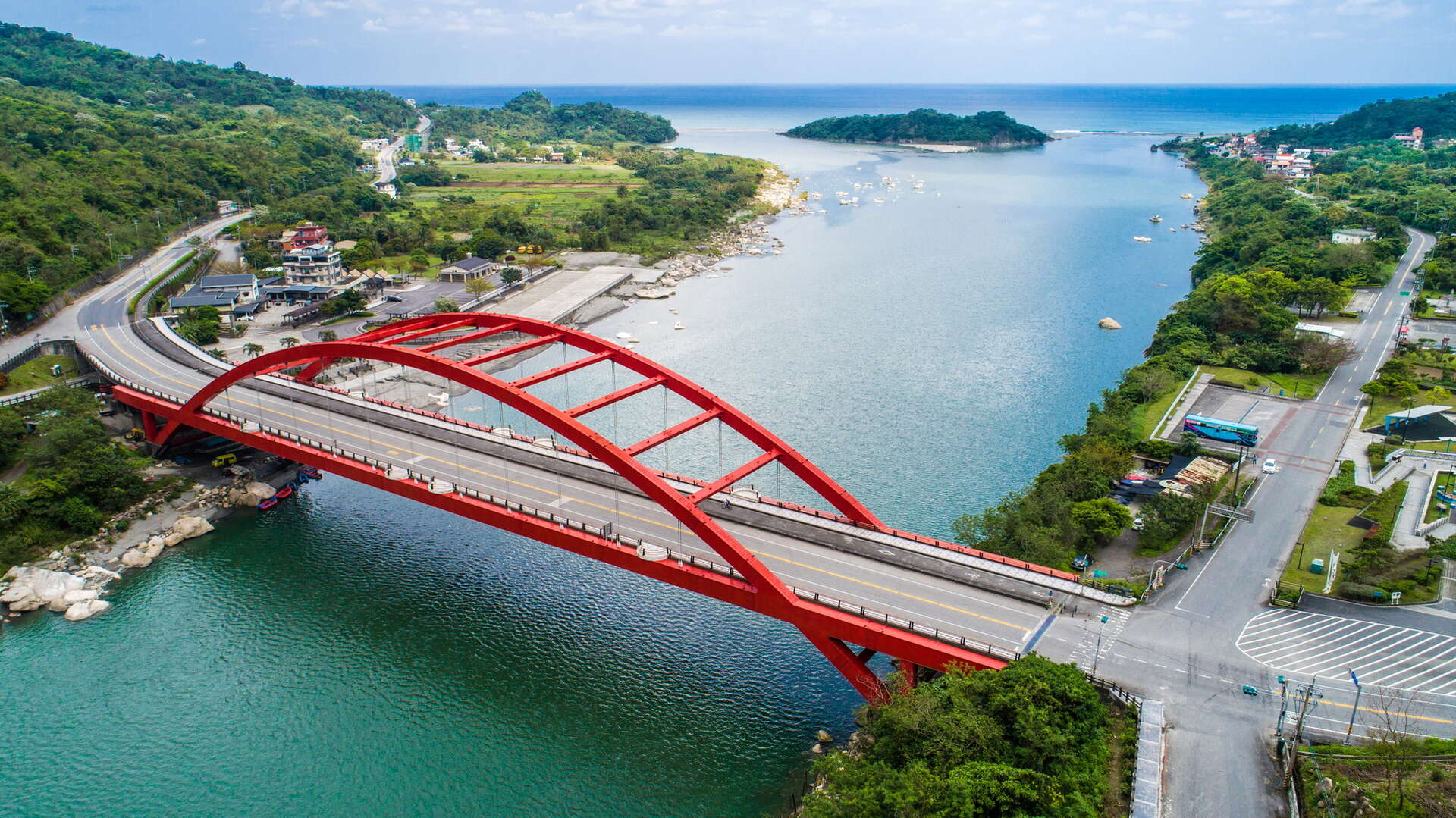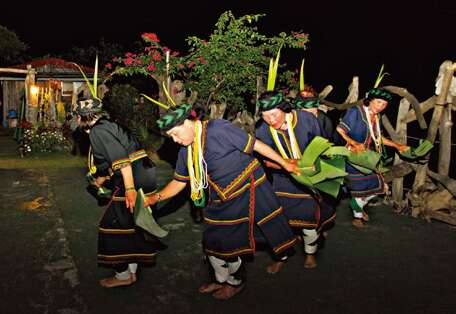Changhong Bridge
Updated:2024-11-25
Popularity
77072Feature
- History and CultureHistory and CultureThe Makotaay tribe is located on the north bank of Xiuguluan River and more than 90% of the population Amis. More than a hundred years ago, the tribesmen fought against the Qing army for rebelling against the rule of Qing dynasty. After the defeat, most of the men were massacred. Women and children fled to other places. They moved back to the tribe many years later.
The Makotaay tribe preserved a fairly complete Amis harvest ceremony, music, and dance, including music and dance performances, craftworks, and indigenous food. The music and dance performances include wizard dance, children’s dance, and modern and ancient songs. Craftworks include handcrafts and daily necessities woven from the bark of mountain hibiscus. Indigenous foods including the flying fish and shell ginger rice dumplings, flying fish rice, glutinous rice wine, and roasted boar meat are full of indigenous culture and flavors. - Nature and EcologyNature and EcologyChanghong Bridge is located at the estuary of Xiuguluan River. Every spring, the Kuroshio in the Pacific Ocean brings a large number of marine life from south to north, including migratory bald sharks, gobies, crabs, eels larvae, and shrimp larvae returning to Xiuguluan River, creating the wonder of "tracing back the river." In the wetlands of Xikou, all kinds of waterfowls fly around seeking food throughout the year. On the observation deck on Changhong Bridge, you can see the dancing ulls and birds from a distance. Down to the beach, you can watch more closely the beautiful posture of the waterfowl.
- Geological EnvironmentGeological EnvironmentFrom the south bank of Changhong Bridge to Xiuguluan River, the rock walls on both sides of the riverbank are composed of huge blocks of volcanic breccia. In the river, there are many huge limestone blocks, which came from the port limestone exposed on the foothills on both sides of the Changhong Bridge. Limestone is composed of shells. If you look closely, you will find many types of fossils, such as corals, globigerina, and foraminifera. They were all creatures living near the crater at that time.
- Xibulan IslandXibulan IslandBefore the Xiuguluan River enters the sea, a small island stands at the wide estuary, dividing the stream into two, going into the Pacific Ocean each in the north and in the south. The small island is located in the center of the estuary, like a ball in the lion's mouth—and therefore the name Shiqiuyu ("Lion ball island") in Chinese and Xibulan Island in the Amis language. The small island is composed of volcanic clastic rocks of the Duluan formation. It covers an area of only 10.67 hectares and the highest point is 40 meters high. It is usually blocked by streams on all sides so few people visit the island. It is an excellent spot for bird watching and a rare, complete coastal thorn forest in Taiwan of great conservation value. Currently, Xibulan Island is a natural conservation zone where landing is prohibited.
- The Makotaay TribeThe Makotaay TribeGangkou Village is located between the estuary of Xiuguluan River and Yuedong, sitting against the mountains, facing the ocean, and next to the river, where 90% of the residents are Amis. The Amis culture is preserved here.
The Amis people here are still like their ancestors. They like catching young migratory creatures at the estuary of Xiuguluan River, collecting shellfish and seaweed on reefs and in the intertidal zone, diving in the sea to catch fish, or farming and hunting on the hills of Coastal Range. Traditional rattan and bamboo plaiting crafts are still quite popular in the tribe.
Every year after a typhoon, driftwoods will come down from Xiuguluan River. The tribesmen use driftwood to create artworks and beautify their homes, which becomes another special feature.
The Makotaay tribe organizes tribal cultural experience tours from time to time. They also accept bookings in advance for groups (over 20 people). Activities include touring the tribe, singing and dancing, and tribal cuisine tasting. (For details please contact the owner of the Fire Studio, Lin Fengmei: 0910-864-276). - JingpuJingpuThe ancient pottery unearthed in Jingpu is similar to modern Amis pottery, so they are also known as the Amis Culture of Iron Age in Taiwan.
- Rahic Talif's art studioRahic Talif's art studioWhen you see Changhong Bridge, take the small road on your right and you will find Rahic Talif's studio. The studio is made of wood, with some tools, wood, and works inside. Rahic Talif is a contemporary Amis artist. In 1990, he returned to his hometown and began his journey of tribal learning. He started from wood carving, grounded in traditions. Later, he used driftwood as the material and became a pioneer in driftwood art. Rahic Talif's creation has transcended from physical existence to conceptualization implied in image, from Taiwan to the world. He has been invited to participate in art exhibitions in New York.
Details
The elegant arches of Changhong Bridge span across the banks of Xiuguluan River estuary, forming a beautiful rainbow where the mountains and the sea meet. It has become a famous photo spot and a landmark on the East Coast. It is also the final destination for rafting. Exhausted and content rafters dock their rafts here. Strolling along the trail by the river, you can see waterfowls foraging along the riverbed, bicycles coming and going, plants on both sides changing with the seasons. If you are tired, you could take a break at the nearby New Pacific No. 1 and have an afternoon tea and enjoy some relaxing time.

Xibulan Island at the estuary, also known as Shiqiuyu, is the sacred land of the coastal Amis people. It is also an island made of volcanic agglomerates. Due to the barrier of streams, it remained in a fairly primitive state. Feeding birds, migratory fishes, shrimps, and crabs all gather here, making it a good place for observing the ecology.


Xibulan Island at the estuary, also known as Shiqiuyu, is the sacred land of the coastal Amis people. It is also an island made of volcanic agglomerates. Due to the barrier of streams, it remained in a fairly primitive state. Feeding birds, migratory fishes, shrimps, and crabs all gather here, making it a good place for observing the ecology.

Information
Open Time
/Always open.
Facilities
- Trail
How to Get There
Choose a transportation method based on your departure location. Remind
1.When landing on Sibulan Island, please pay attention to the tides








